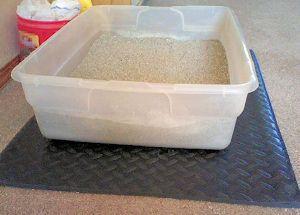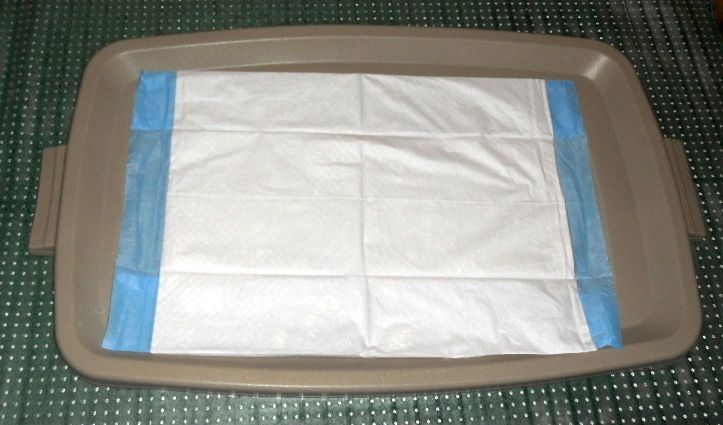How to Litter Train a Cat
Jun 10, 2019 Tracey Aston Training

It's a common misconception that cats are born litter trained and won't require any extra training. While it's true that cats will instinctively eliminate in soil or sand and then attempt to cover it, that doesn't always equal litter box trained. Around 3 to 4 weeks of age, a kitten will begin to imitate their mother's elimination habits and if she is litter box trained, the kittens will follow her lead. That doesn't mean that training ends there. Small kittens should be kept in a confined area enough space to move around and fit a food and water bowl. Every few hours take the kitten to the litter box and praise them when they eliminate. Like crating dogs helps with their potty training, keeping a kitten confined will help with theirs. Yes, they like to dig and cover their waste, but their bladders are still small.
Cats will all have their own preferences on litter types, box types and litter box locations. Some cats prefer a covered box, others won't use one; some cats will share a box with other cats in the house and some will out right refuse!
The best place to start is to find your cat's preference in litter box type. As mentioned, some cats will refuse to use a hooded litter box because it makes them feel trapped. The same thing goes for self-cleaning boxes. While you may think a self-cleaning box will ensure your pet always has a clean place to eliminate, some of the features on these boxes may scare your pet away from using it. Next make sure there are enough litter boxes accessible to the cat. A cat lounging in the bedroom won't want to walk downstairs, through the living room and into the laundry room to eliminate. The number of litter boxes should also correspond with the number of cats in the home. There should always be 1 litter box per cat plus 1 extra, per floor, meaning if there are 3 cats in the home, there should be 4 litter boxes, per floor.
Second, choosing a litter type - there are numerous types of cat litters to choose from including clumping clay, non-clumping clay, silica gel crystals, recycled paper, and natural litters such as pine, corn, walnut shells and wheat. Which one you choose depends on the preference of you and your cat. It's possible you many have to try a few different types of litter to find out which one your pet prefers. Litter should be no more than two inches deep.
Location, location, location. Make sure the cat's litter box is in an easily accessible, lighted area that will still have some privacy. Don't shove litter boxes into tight spaces or set them next to a loud refrigerator or running washer.
Scoop the litter boxes regularly. You don't want to use a dirty bathroom and neither do they! The number of times the litter box will have to be scooped depends on the number of cats in the home, the cat's elimination habits. A cat who drinks a lot of a cat with medical issues may urinate more frequently and a cat that is being free fed may defecate more frequently based on how much the cat is eating a day. A good general rule of thumb is twice a day.
If a cat that has been using the litter box stops suddenly, there could be other issues involved. Cats, even neutered cats, can mark and spray out of stress such as a new baby or animal, a new house or even if a stray cat has moved into the neighborhood. Also, it's always best to check with a veterinarian to make sure the cat doesn't have any medical issues that would be causing them to eliminate outside the box, such as a blockage or bladder or urinary tract infection.
As cats age, they may have a tougher time walking distances to the litter box or stepping over a high ledge due to arthritis. If this is the case, an under-the-bed storage container or even a shoe tray lined with a pee-pee pad and topped with litter can be used as a substitute.


The fact that cats prefer to dig and cover their waste will definitely help in litter training, but that doesn't mean there won't be any other health or behavior issues coming up in the course of their lives. Always rule out health concerns first, and then check the cleanliness of the box, the litter and box type and finally behavior issues.
















